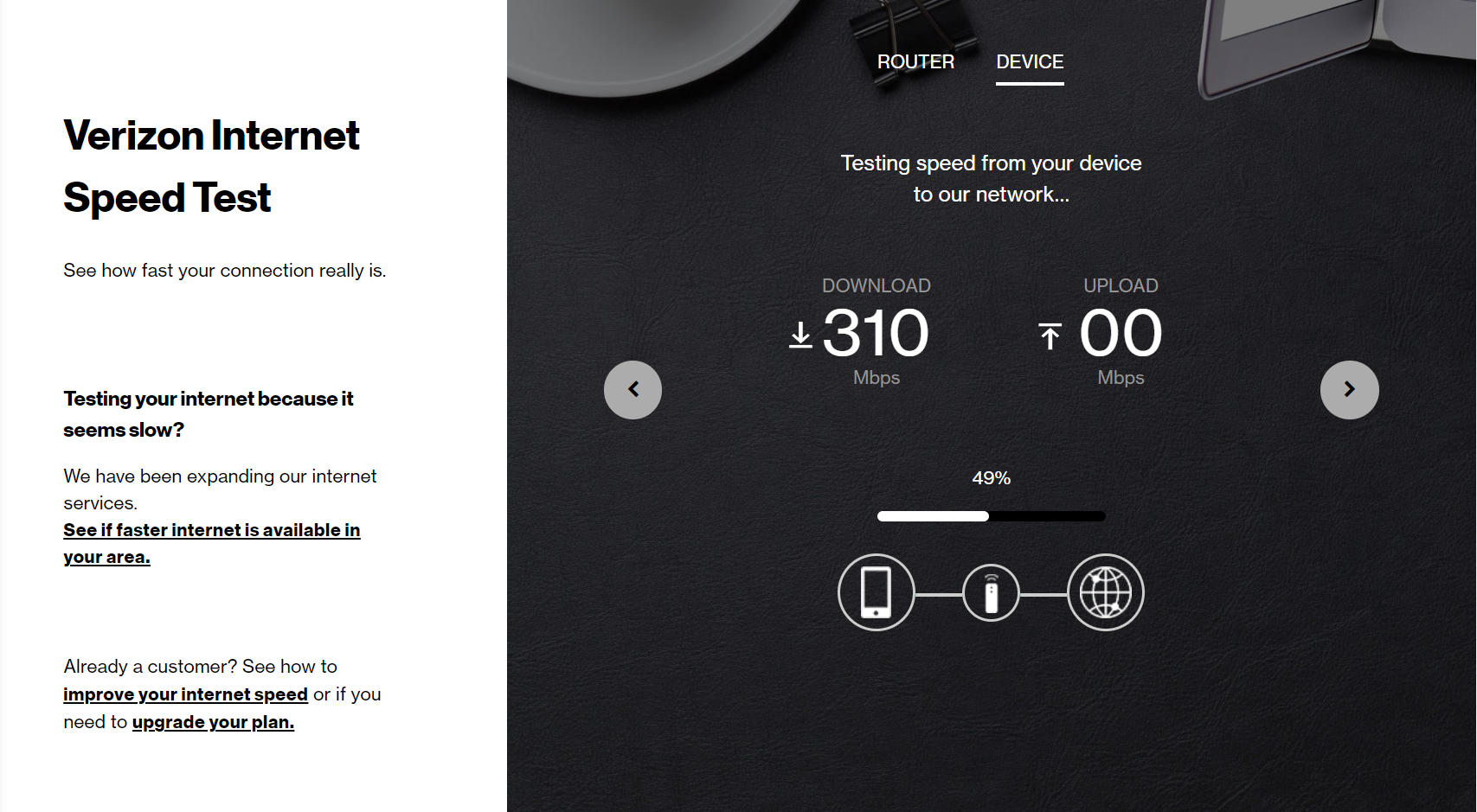Essay - Published: 2022.10.14 | fios | internet | verizon |
DISCLOSURE: If you buy through affiliate links, I may earn a small commission. (disclosures)
For the past few days I noticed that many websites that were previously fast were now running super slowly if they loaded at all. I've got Gb Verizon Fios service and my speed tests kept telling me that my download was still in the high 100s mbps - so it was baffling that simple sites wouldn't load at all.
In this post I'm going to share some resources I used to identify ipv6 checksums as my root cause issue, how I resolved this issue, and why I think it's a decent long-term fix.
First let's check that the problem you're facing is similar to the problem I was facing. If not, this fix probably won't work for you.
From my research the simplest way to check whether you 1) are having issues and 2) whether it's likely due to this ipv6 checksum issue is to use the Verizon Internet Speed Test.
With the ipv6 checksum issue, you should see a result where:
Example:

From my research (references below) this symptom is most often caused by incompatibilities in a feature called the ipv6 checksum and typically reveals itself when your network upgrades from ipv4 -> ipv6.
ipv4 vs ipv6
So the important thing to note is that the format of these addresses and how they work is materially different. So even if a network entity / agent works well on one, it doesn't necessarily mean it will work well on another.
It seems that Network Interface Cards (NICs) have common problems with these upgrades - some have edge cases where they perform poorly or simply don't work well with one protocol vs another.
So typically when we see this 0 mbps upload thing it's caused by a NIC incompatibility and this is often built into the hardware so there's often no upgrade path besides replacement.
References
Based on my research the simplest method is to turn off ipv6 checksum. While it sounds like this would be bad because it would remove a checksum security feature, in reality what this does is turn off delegation of this functionality to the NIC. In other words, this feature still runs, it just doesn't run in the hardware-optimized NIC and instead will run on your machine - typically using CPU.
To do this on Windows 10, run PowerShell as administrator and run:
Disable-NetAdapterChecksumOffload -Name "*" -TcpIPv6
Command source: Disable-NetAdapterChecksumOffload
Pros:
Cons:
References:
After running the above command, my network speed seemed to go back to normal! I was again able to upload to YouTube, search Google, make Google Slides, etc.
The best way to support my work is to like / comment / share for the algorithm and subscribe for future updates.